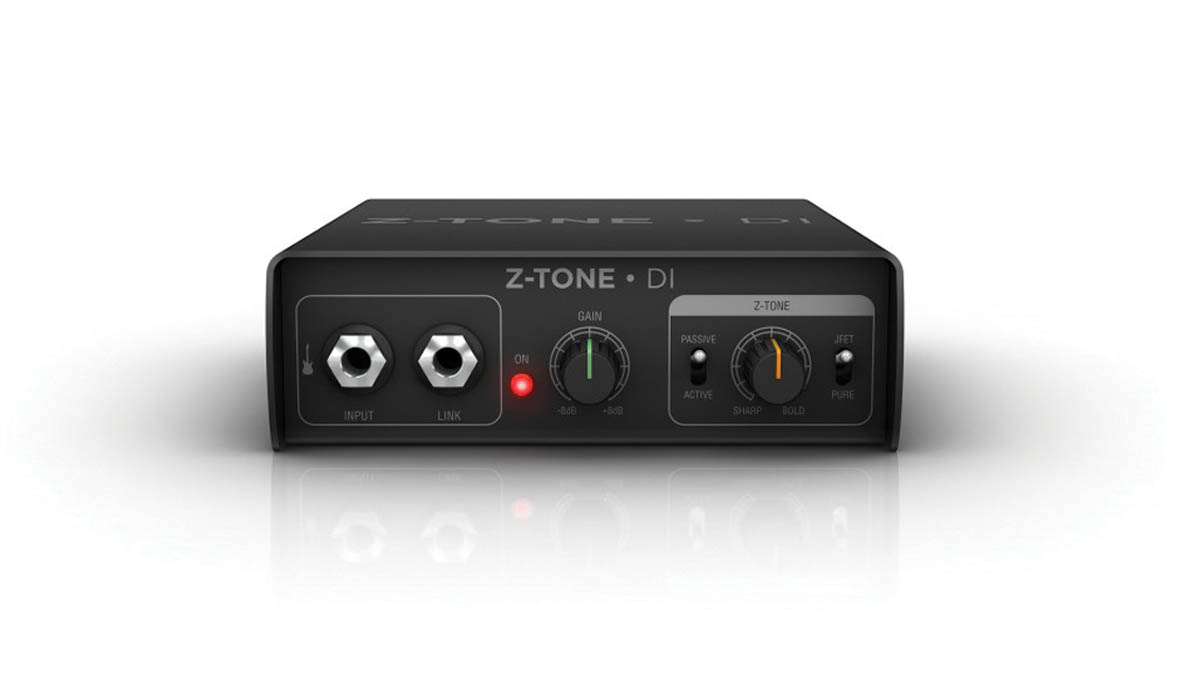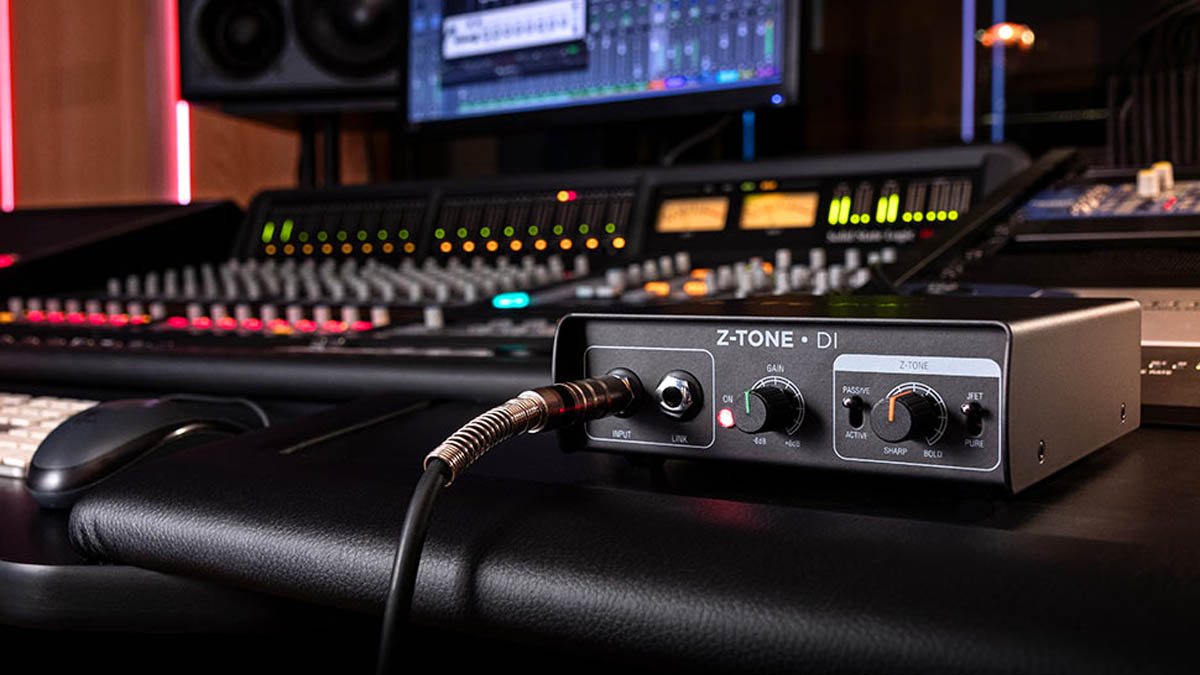GuitarPlayer Verdict
If you need a DI box for the stage or studio, IK's Z-Tone presents excellent value, with features such as impedance control and a JFET preamp setting offering some welcome control over your tone.
Pros
- +
Well-conceived and robustly constructed.
- +
Versatile and usable DI tones at a very accessible price.
Cons
- -
Some settings might be superfluous in the face of the clarity and articulation found in others.
You can trust Guitar Player.
Digital amplifier plug-ins have made it possible to get great tube-like guitar tones in home and professional studio environments alike.
Given the ease and convenience of IK Multimedia’s AmpliTube offerings and popular software from Universal Audio, Waves, Positive Grid and others, guitarists are discovering the benefits of laying down their tracks via DI and perfecting the tones in the mix.
To that end, IK Multimedia has released the new Z-Tone DI, a rugged and well-equipped DI that offers more utility and greater tone-shaping options than first meet the eye.
A 1/4inch jack alongside the guitar input allows you to link the untreated guitar signal to a live amp or modeling unit to record parallel tracks, with the option of treating the DI’d signal later.
The gain control has a center detent, with –8/+8dB of gain in either direction, and a toggle switch adds sparkle with a JFET preamp or neutral signal via the Pure setting.
Z-Tone’s rotary Sharp/Bold impedance control allows you to tweak the character of your guitar signal by matching or intentionally mismatching impedances, while another toggle enables the use of passive or active pickups.
In addition to the balanced XLR and unbalanced 1/4inch output on the back, there are push buttons for ground lift and a –20dB pad, as well as the battery compartment door. The Z-Tone runs on a nine-volt battery and can be fired up by phantom power from your desk or recording interface.
While some might like to see the option of an external power supply, most situations to which this DI applies will have phantom available. The Z-Tone is housed in a folded-metal case measuring 5.75 by 5.25 by 1.75 inches. It feels solid and has some heft to it as well.
The internal specifications look good too: It boasts a 114dB dynamic range and a frequency response of 5 Hz to 30 kHz – more than enough to capture every nuance of the guitar or bass frequency range.
I tested the Z-Tone DI by recording tracks to Pro Tools via a Universal Audio Apollo Twin Duo interface, occasionally paralleling the link output to a Friedman Small Box head and 2x12 cab live in the room (which could be miked for an “amped-up” track), or a Fractal AxeFX III digital unit, using a Fender Telecaster with single-coil pickups and a Nik Huber Orca 59 with humbuckers.
The Z-Tone DI performed as advertised, with significantly more flexibility than most traditional DIs or the hi-Z guitar inputs found on many project recording interfaces today.

Using the Pure setting resulted in a recorded signal that sounded like that of a traditional neutral, linear DI - whether passive or active - given the rather dull sonic response and lack of coloration. This is all largely desirable if you’re going to reamp or treat the signal in your DAW.
But I was still impressed with the balanced frequency response and the total absence of distortion artifacts when I hit the humbucker-loaded Orca hard.
Ultimately, even when I applied IK’s own AmpliTube software to the recorded tracks as a plug-in to test the signal through the company's American Clean and British Crunch models, I found myself preferring the added zing, detail and clarity yielded by the Z-Tone’s JFET preamp setting.
I felt it helped get the most out of the raw guitar signal, making maximum fidelity available in the final track. It never induced harshness and could be tamed and crafted via plug-in EQs and other treatments as required.

While the Z-Tone impedance control seems a nifty option on paper, in practice I didn’t find myself deviating more than about 20 percent from the Sharp position on the knob, and I felt that full Sharp provided the most usable signal, for the same reasons that I preferred the JFET setting.
For the times you need a really thick, warm, mellow guitar tone for ballads, jazz and what have you, about 60 percent toward Bold will be just the ticket
The Bold setting, to my ears, might more accurately have been named “thick” or even “muted.” Use the Sharp setting to get the clarity and articulation and fidelity into the track in the first place, and you can craft it after the fact as necessary.
For the times you need a really thick, warm, mellow guitar tone for ballads, jazz and what have you, about 60 percent toward Bold will be just the ticket.
All in all, the Z-Tone DI is well-conceived, sturdily put together and very reasonably priced for the features and signal quality it offers, and makes a DI to be reckoned with for today’s project recordist.
Specifications
- PRICE: $149 street
- CONTROLS: Gain, Z-Tone Sharp/Bold impedance control, front panel switches for passive/active pickups and JFET/Pure signal; rear panel push buttons for ground lift and –20dB pad
- I/O: Guitar input, link (untreated parallel to amp), balanced XLR out, unbalanced ¼inch out
- POWER: 9V internal battery or phantom power
- BUILT: Italy
- CONTACT: IK Multimedia
Dave Hunter is a writer and consulting editor for Guitar Player magazine. His prolific output as author includes Fender 75 Years, The Guitar Amp Handbook, The British Amp Invasion, Ultimate Star Guitars, Guitar Effects Pedals, The Guitar Pickup Handbook, The Fender Telecaster and several other titles. Hunter is a former editor of The Guitar Magazine (UK), and a contributor to Vintage Guitar, Premier Guitar, The Connoisseur and other publications. A contributing essayist to the United States Library of Congress National Recording Preservation Board’s Permanent Archive, he lives in Kittery, ME, with his wife and their two children and fronts the bands A Different Engine and The Stereo Field.
"The only thing missing is the noise from the tape loop." We review the Strymon EC-1 Single Head dTape Echo, a convincing take on a very special vintage tube Echoplex
"BigSky MX will be replacing the BigSky as my go-to reverb pedal. I’ve heard nothing that covers all the bases with such pristine and detailed audio quality." We crowned the Strymon BigSky MX the champ of multi-reverb pedals












